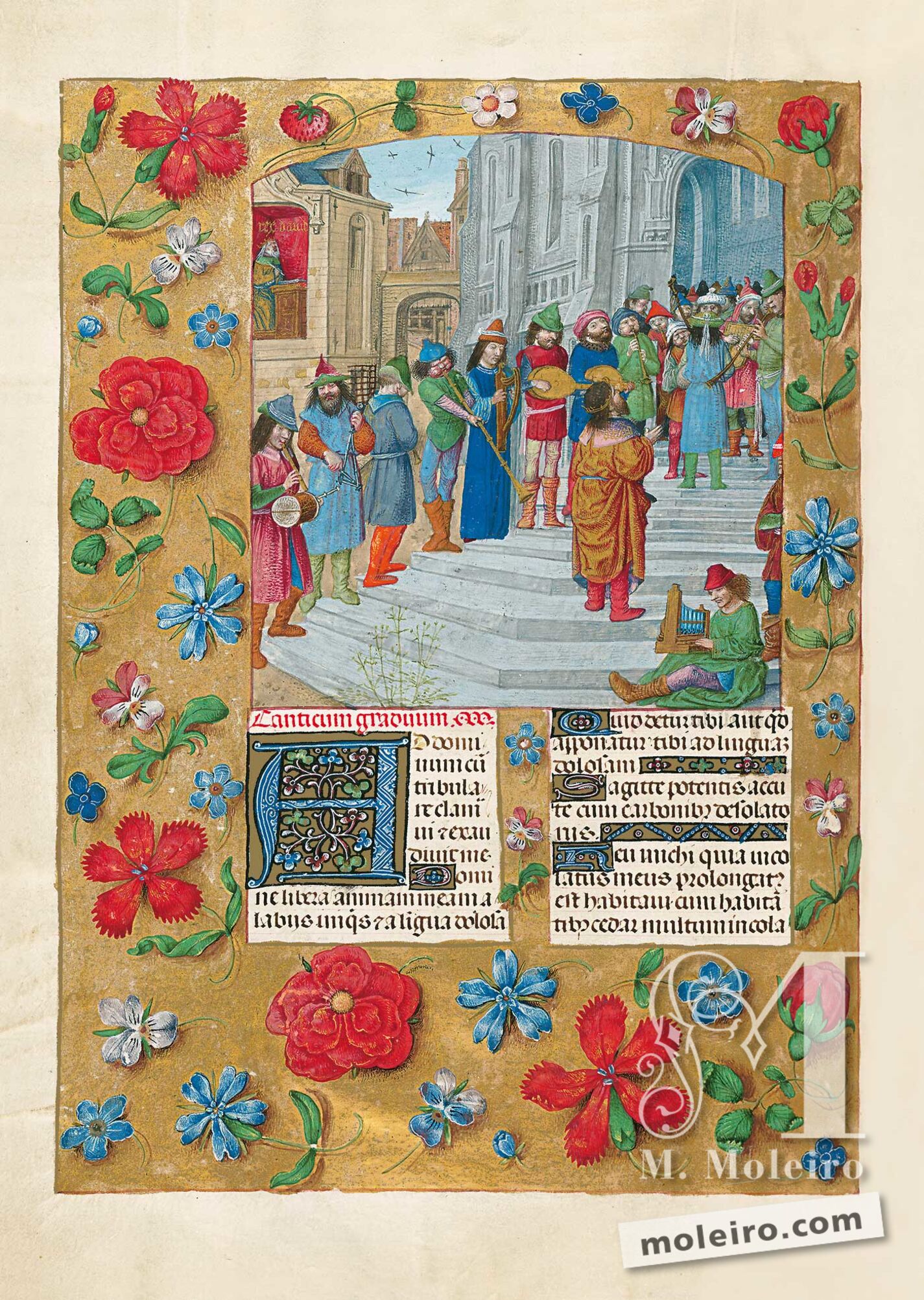The scene chosen by the Master of the Dresden Prayer Book to open the fifteen gradual psalms in the psalter is of David surrounded by musicians and climbing the fifteen symbolic stairs of the Temple, depicted as a large church of that period in an urban setting. The king of Israel is portrayed twice. The first time, on the right of the composition in a chamber, kneeling in prayer on a prie-dieu with an open book, with the words
rex dauid written in gold above him. The second time, the monarch is depicted in the main scene from the back with his head aloft standing on the third stair of the temple. One interesting feature of the style of the Master of the Dresden Prayer Book is that the main character, as in the case of the painting on f. 146v which also depicts David, is seen from the back. This highlights the immediacy and spontaneity sought for the composition, disregarding any regal considerations. Furthermore, not all figures are shown in full. The characters on the sides are cut off, requiring viewers to use their experience and imagination to visualise the entire scene. As in the case of the leading figure seen from the back, this emphasises both the deliberate spontaneity of the composition and its modernity.
Apart from its compositional and symbolic values, the interest of the painting also focuses on the musical instruments depicted. There are more wind than string instruments as was usual when minstrels were hired by major cathedrals, churches or chapels belonging to the nobility to accompany voices during the liturgy in that period in Flanders. This does not, however, mean that the painting depicts a musical celebration of that time with the instruments used in that period, since some of them would be archaic or unsuitable for a liturgical celebration. It is simply a sample of the variety of musical instruments that the
Sukkah (5: 1-4) says were traditionally played by Levites – harps, lyres, cymbals and trumpets – to celebrate the feast of the Tabernacles on the fifteen stairs of the Temple. One man in the foreground plays a recorder, another, an
organetto or portable organ, and yet another a triangle. The next figure, seen from behind, plays a wind instrument that is difficult to identify, possibly a shawm. Then there is a large, natural horn, followed by a harp held in a very contrived position by its player, two lutes possibly being played with a plectrum, and more shawms.
The gradual psalms, psalms 119 to 133, are fifteen popular canticles possibly sung by pilgrims on their way to the major feasts in Jerusalem, as their name in Hebrew,
shir hamma’aloth, suggests. The
Mishna says that “Fifteen stairs led... [from the women’s section] to the Israelites’ section, stairs matching the fifteen canticles of
Maaloth in the Psalms, and the Levites sung upon them” (Middoth 2: 5).
